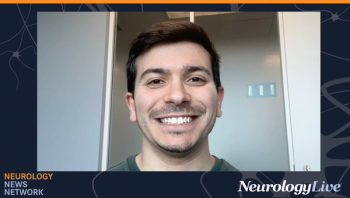
Long-Term Safety and Tolerability of Low-Sodium Oxybate Confirmed
In a recent long-term analysis of a phase 3 trial, the most common treatment-emergent adverse events that led to discontinuation of low-sodium oxybate were cataplexy, headache, nausea, and psychiatric disorders.
Recently published in CNS Drugs, findings from a long-term analysis on a phase 3 trial (NCT03030599) investigating low-sodium oxybate (LXB; Xywav; Jazz Pharmaceuticals) showed a safety and tolerability profile that was consistent with previous studies of patients with narcolepsy with cataplexy.1
In the safety population of 201 patients, the most common LXB-emergent TEAE overall was headache (71 events; n = 42 [21%]; median duration, 1 day [range, 1-147]) from the open-label optimized treatment and titration period (OLOTTP) and the stable dose period (SDP). Following headache in this same population, the other most common TEAEs were nausea (31 events; n = 26 [13%]; median duration = 9 days [range, 1-54]) and dizziness (26 events; n = 21 [10%]; median duration = 7 days [1-117]).
Lead author
In the analysis, researchers explored the time of onset and duration of common TEAEs for LXB throughout the 12-week OLOTTP and the SDP 2-week in the double-blind, placebo-controlled, randomized withdrawal trial, and the subsequent 24-week open-label extension (OLE). At study entry, participants aged 18-70 years with a diagnosis of narcolepsy with cataplexy received sodium oxybate (SXB) alone (n = 52), SXB with other anticataplectics (n = 23), other anticataplectics alone (n= 36), or were anticataplectic–treatment-naïve (n = 90). The authors noted that the other anticataplectics were tapered and discontinued during the OLOTTP.
All participants started the treatment dose, individually titrated based on safety and efficacy, during the first week of the OLOTT. After the main study period, participants entered the OLE after rescreening and discontinuing LXB or directly after the completion of the main study. The researchers assessed TEAEs, with duration defined as time from TEAE start date to end date, in the safety population as a database lock.
Similarly to the other study periods, the most commonly reported TEAEs among the 74 participants from the OLE, were headache (14 events; n = 7 [9%]; peak incidence month 3, n = 5 of 72; median duration, 1 day [range, 1-25]), dizziness (8 events; n = 5 [7%]; peak incidence month 1, n = 3 of 74; median duration, 26 days [range, 1-181]), and nasopharyngitis (6 events; n = 6 [8%]; peak incidence month 6, n = 2 of 69; median duration, 9 days [1-24]). The authors noted that the overall study discontinuations accredited to TEAEs were 21 of 65 (32%) in the OLOTTP and SD, then 3 of 7 (43%) in the OLE.
“TEAEs of worsening cataplexy were most common among participants who had previously been taking SXB with other anticataplectics and were also observed in a smaller number of participants who had previously been taking other anticataplectics alone. Participants previously taking SXB with other anticataplectics likely represent those with the most severe disease and were the only group in which the median LXB dose reached the maximum 9 g/night,” Bogan et al noted.1
All told, the strengths of the analysis were the stratification of participants by prior treatment at study entry and the 38-week duration of the analysis period which allowed for a detailed assessment of the timing and duration of TEAEs. In addition, the authors noted that the doses were individually optimized for each participant, matching more closely with real-world practice compared with forced titration or fixed dosing. Despite the study’s strengths, limitations include the design of the open-label study as it might have affected the participants’ expectations about the treatment and their experience of TEAEs.2
The investigators also did not collect information on timing of TEAEs relative to time of day of the LXB taken dose. In addition, they noted that the division of participants by treatment at study entry left few participants in the “other anticataplectics alone” and “SXB with other anticataplectics” groups compared with the other groups. Bogan and colleagues noted the data at study entry on the exact frequency of cataplexy were not collected, nor did they measure or analyze blood pressure as an outcome. As more than 90% of the patients in the study were White, the researchers recommended that future research is required with more diverse populations.
REFERENCES
1. Bogan RK, Foldvary-Schaefer N, Skowronski R, Chen A, Thorpy MJ. Long-Term Safety and Tolerability During a Clinical Trial and Open-Label Extension of Low-Sodium Oxybate in Participants with Narcolepsy with Cataplexy. CNS Drugs. 2023;37(4):323-335. doi:10.1007/s40263-023-00992-y
2. Finniss DG, Kaptchuk TJ, Miller F, Benedetti F. Biological, clinical, and ethical advances of placebo effects. Lancet. 2010;375(9715):686-695. doi:10.1016/S0140-6736(09)61706-2
Newsletter
Keep your finger on the pulse of neurology—subscribe to NeurologyLive for expert interviews, new data, and breakthrough treatment updates.



























